Pollok Country Park, on the edge of Glasgow, is one of the most famous city parks in the UK. It’s the largest park in Glasgow, at 146 hectares. This makes it three-quarters of size of Monaco or half the size of the City Of London. It’s also been regarded as one of the best urban parks in the world, and certainly the only one where you’re likely to see Highland Cows. It was donated to the city in 1966 on condition it remained a park, and wouldn’t be built on. Which, apart from a motorway that cuts off any access from the west aside from one footpath, they didn’t.
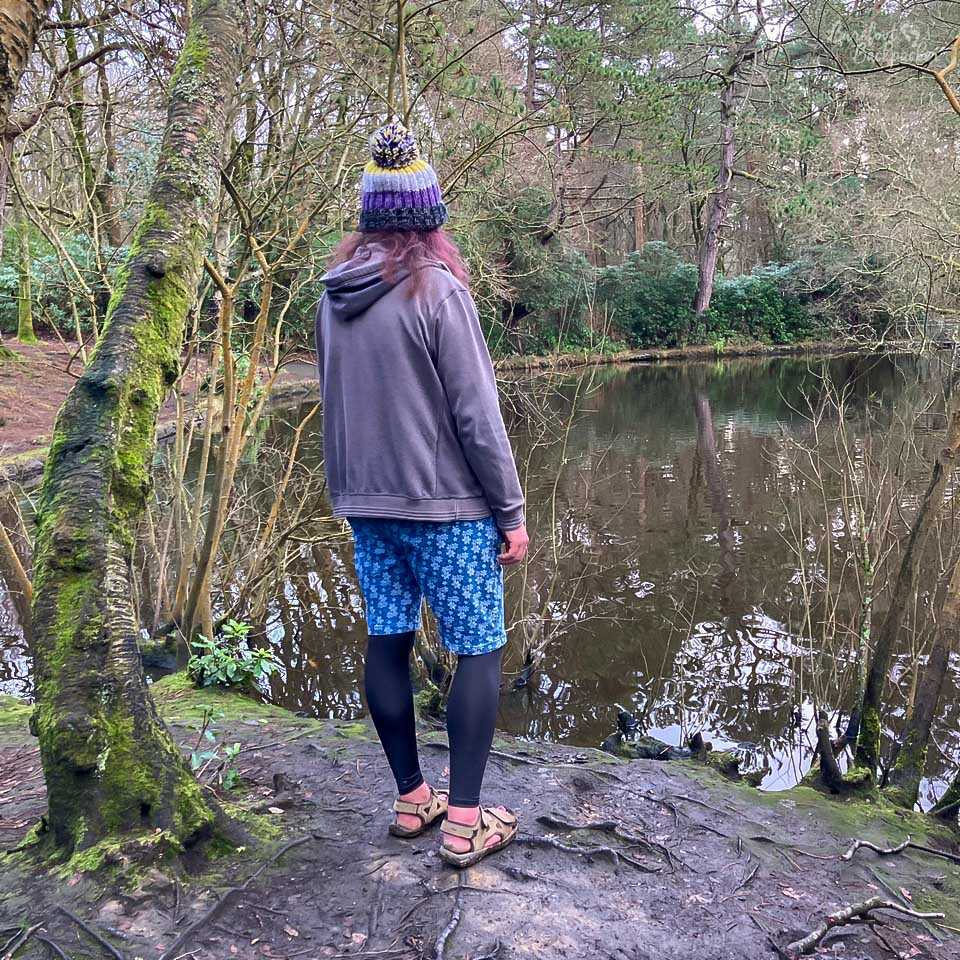
One of the ponds in Pollok Country Park.
Where is Pollok Country Park?
It lies in the southwest of Glasgow, between the districts of Pollokshields, Pollokshaws, Corkerhill, and the ‘new estate’ of Pollok. It’s also near to the Springburn shopping centre. By public transport, it’s best accessed from the railway stations at Pollokshaws West (on the East Kilbride line, directly outside the southern entrance) or Shawlands (on the Cathcart Circle, close to the eastern entrance), and there’s buses that stop directly outside the main entrances.
What is the history of Pollok Country Park?
The name Pollok seems to come from a Gaelic word meaning ‘pool’ or ‘pit’. Incidentally, ‘Shaws’ (as seen in Pollokshaws, nearby Shawlands, and the town of Wishaw near Motherwell) is an old Scots word meaning ‘woods’ or ‘woodland’. ‘Shields’ comes from ‘shielinga’, which is a type of hut, similar to a bothy. These names imply this part of Glasgow was quite boggy and damp, with woodland in the south and a little farmland in the north, where the land rises before dropping back again to meet the Clyde.
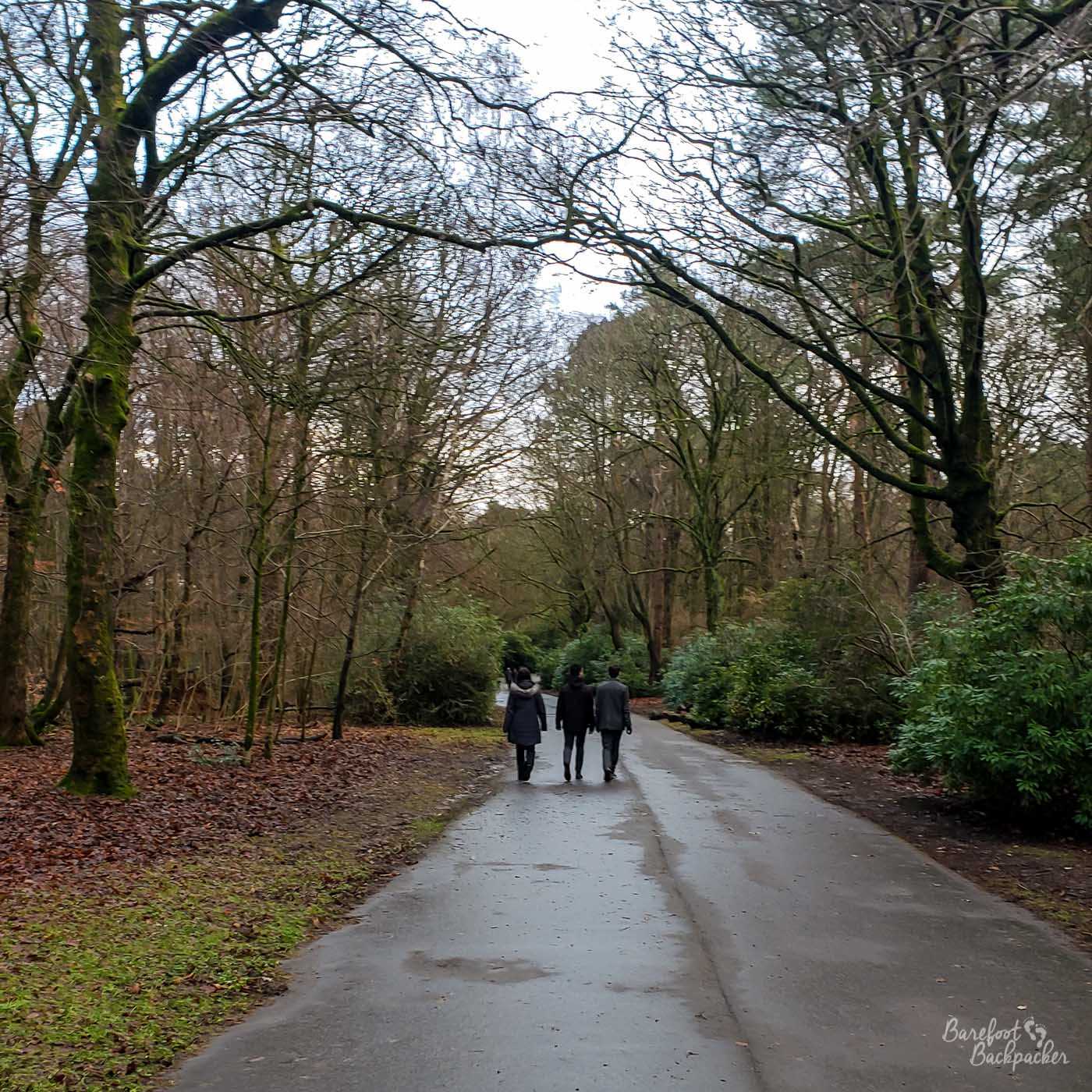
The main route through Pollok Country Park.
The family that owned the land was the Maxwell family, of which Sir John Stirling Maxwell was a leading member at the turn of the 20th Century. He was the local MP, was chairman and trustee of a couple of notable Fine Arts organisations, and founder of the National Trust for Scotland. Despite being landed gentry, he seems to have been very keen on allowing access to green space rather than hoarding it for personal gain. It was under his auspices that Pollok Country Park developed the way and the size it did.
As an aside, he was also responsible for making the neighbouring residential areas somewhat prestigious – even today housing in the nearby suburb of Maxwell Park is amongst the most expensive in Glasgow, and neighbouring Pollokshields has some of the finest examples of late-Victorian tenement blocks.

The park side of Pollok House.
What does Pollok Country Park look like?
The park itself feels very much like country parkland rather than an urban park. While there’s some areas of open lawn, the majority of it is forested, with streams flowing through and a couple of lakes in the centre. On the western fringes of the park there aren’t even many trail paths and it feels very remote. There’s a Parkrun here, quite popular, though with a bit too much gravel and knobbly path in one part to comfortably run it barefoot, and the size of the park means it’s one of those rare two-lap courses rather than the more common three-laps. On the edge there’s also a running club, a rugby club, and a cricket club.
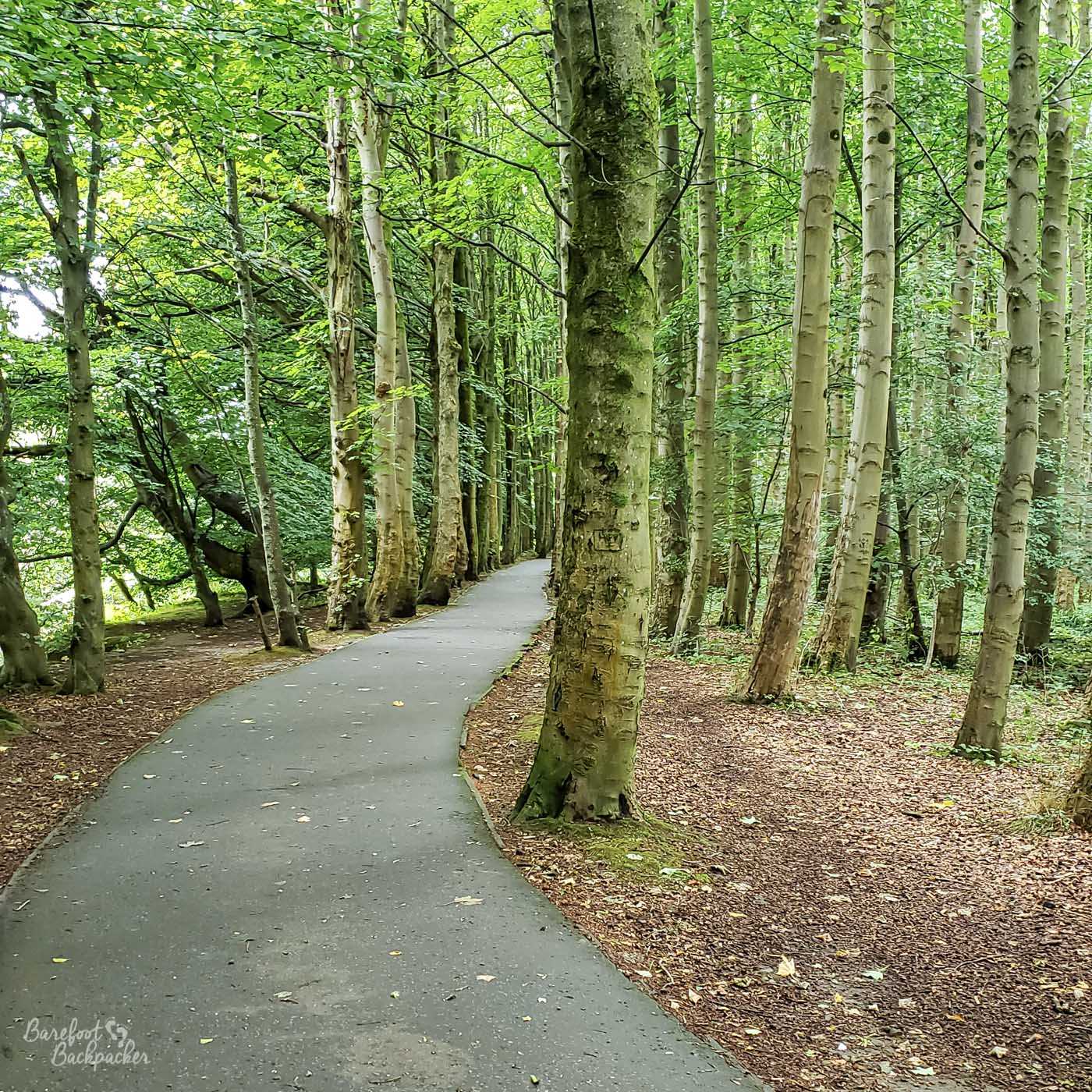
The path in the southeast of Pollok Country Park, heading tiwards the Corkerhill entrance.
The main drag through the park, which forms the bulk of the Parkrun course is a wide tarmac ‘road’, although it’s not one used by cars. At points along this route there are information boards and paths off to the side telling you about the trees and the wildlife, and highlighting the lakes. There’s also a few carved wooden benches and logs with philosophical thoughts to ponder as you walk on.
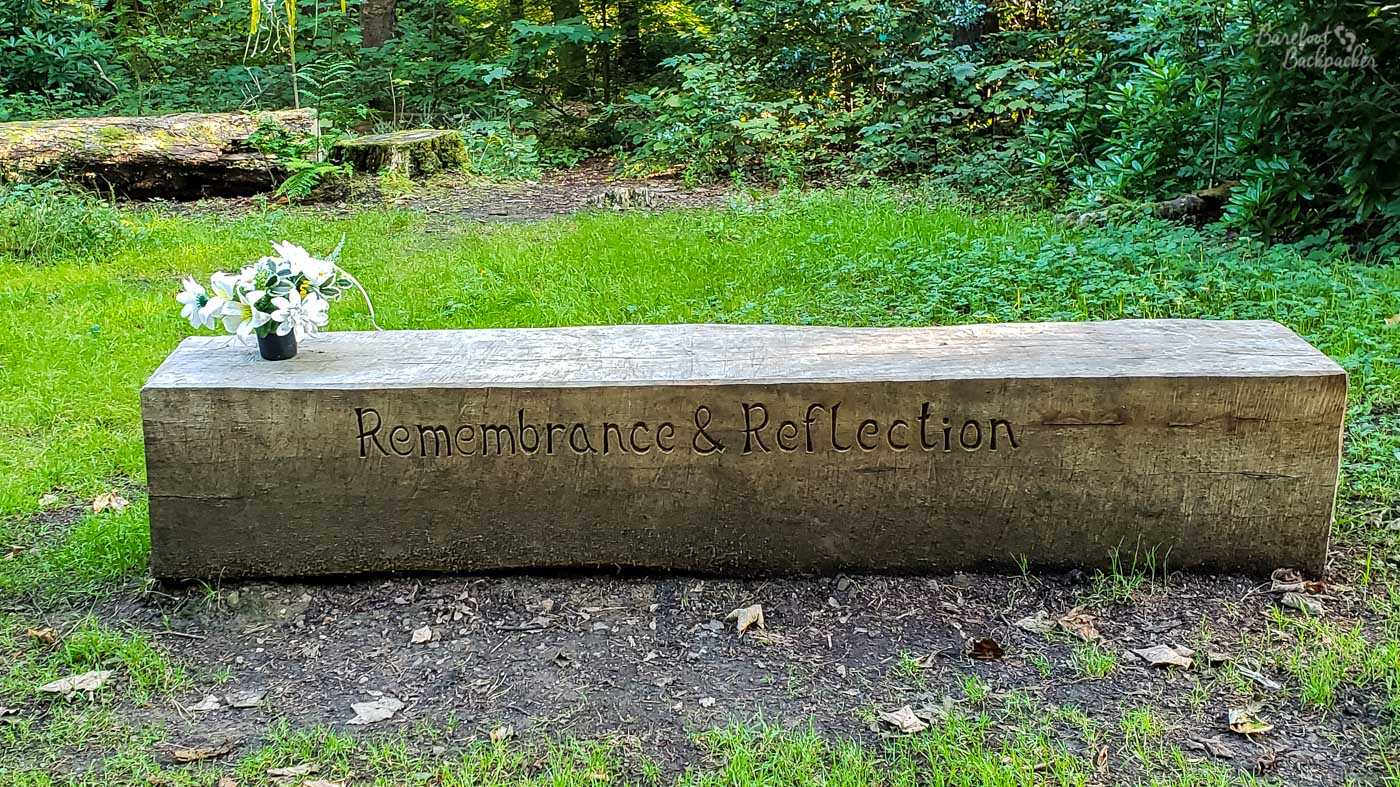
Time to stop and think about things.
Flowing along the southern edge of the park is a river called White Cart Water. This rises near East Kilbride and flows through much of southern Glasgow before joining the Clyde near Glasgow Airport. Much of the river, including through Pollok Country Park, has a footpath running alongside it, and it makes for a quite picturesque amble.
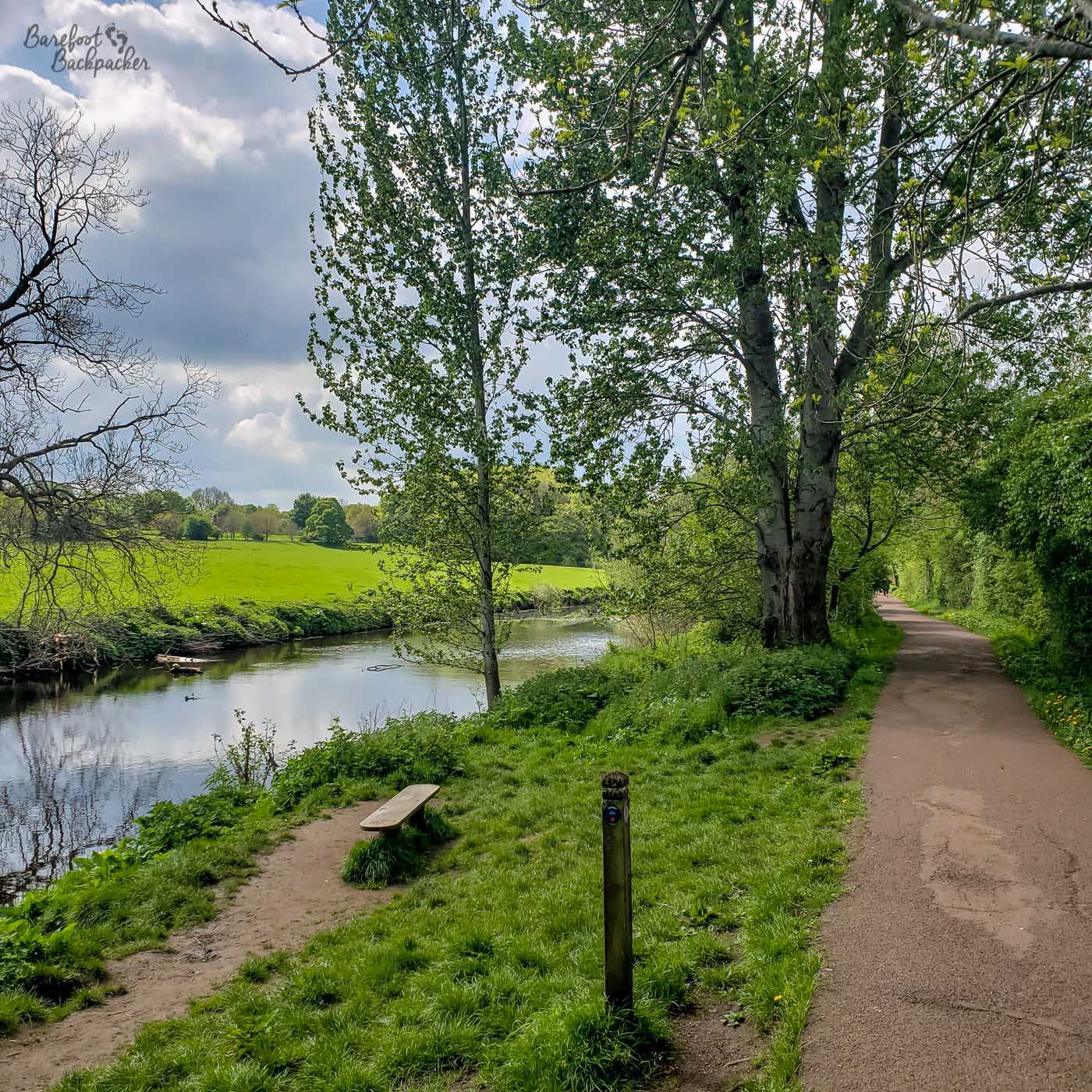
A path along the White Cart Water near the southern entrance to Pollok Country Park.
As for the highland cows, well there’s around 50 of them in the park and this makes it the easiest place for most of Glasgow to see them. They’ve been a feature of the park since the early 1800s, when the Maxwell family decided it would be a really cool idea to have them around. It seems this was also for commercial purposes; the soil and land in what is now Pollok Country Park suited them more than arable farming, and they could breed them for show purposes (and presumably stud).
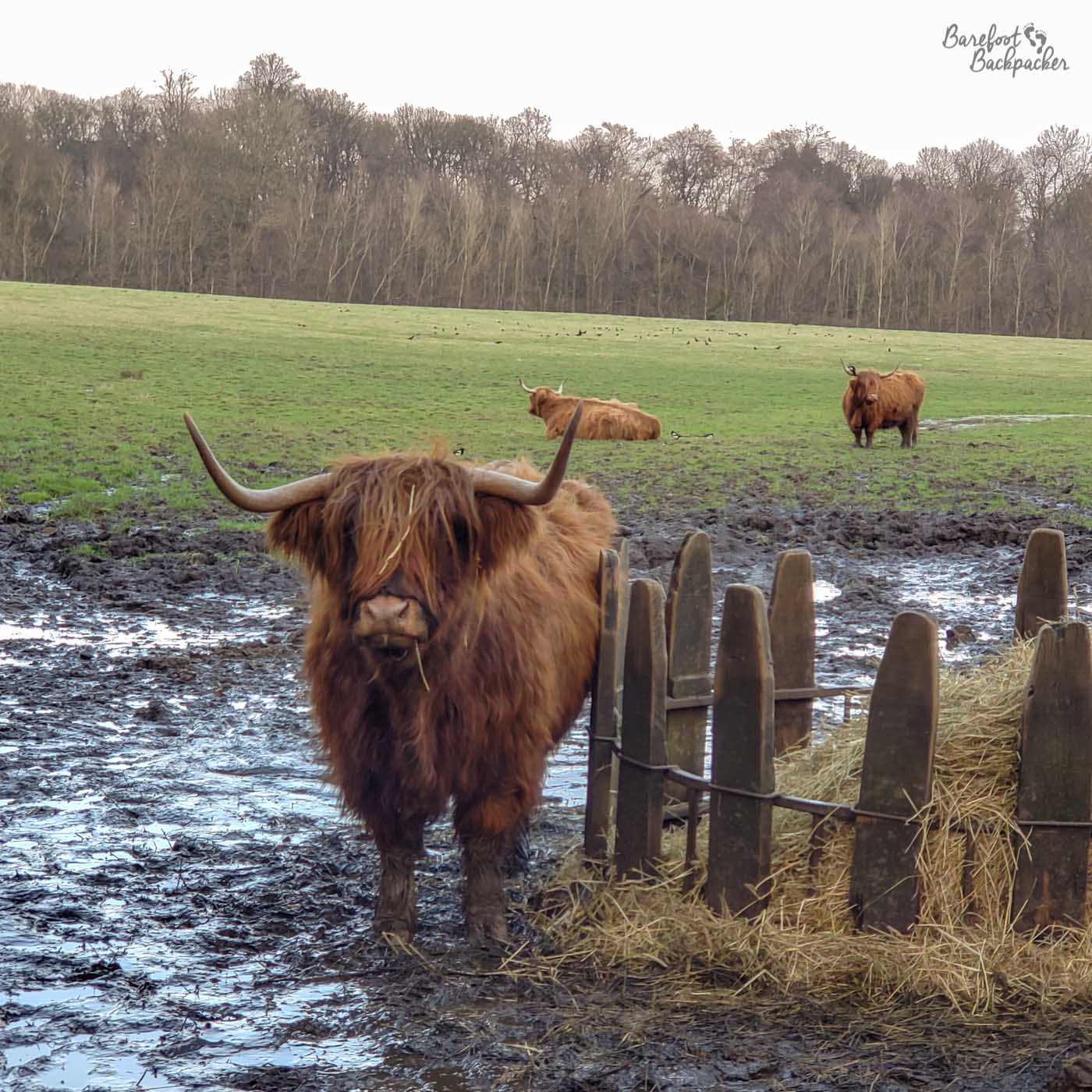
One of the many Highland Cows in the park.
Pollok Country Park is also home to the Maxwell family’s old manor, Pollok House.
What can you see at Pollok House?
The family home was Pollok House, which still stands today and is visitable as part of the deal with the council. It was built in the mid 1750s and is surrounded by a large set of walled flower gardens with paths going every which way. I’ve got lost in them a couple of times because it’s not quite as easy as you’d think to get from one side of them to the other if you’re coming in from the footpath along the White Cart Water. It’s possible to get almost to the water’s edge, and there’s a stone-arched bridge over it dating from the same period which looks cool in photos.

The stone arch bridge crossing the White Cart Water linking to Pollok House.
Inside the house is a restaurant, museum and art gallery, and is where the famous Burrell Collection is on display. This is a collection of almost 9,000 art pieces obtained over many years by local shipping magnate William Burrell, which were donated by him to the city of Glasgow in 1944 (at that point the collection was only 6,000 strong; he literally carried on afterwards until his death in 1958), purely because he seems to have felt that was the right thing to do with them. It took the city council the best part of 20 years to find a place for them; the donation of Pollok House and Park proved quite serendipitous. The art includes one of the largest collection of Spanish paintings in the world, much mediaeval art and weaponry, sculpture ancient and modern, and random things he just seems to have liked.
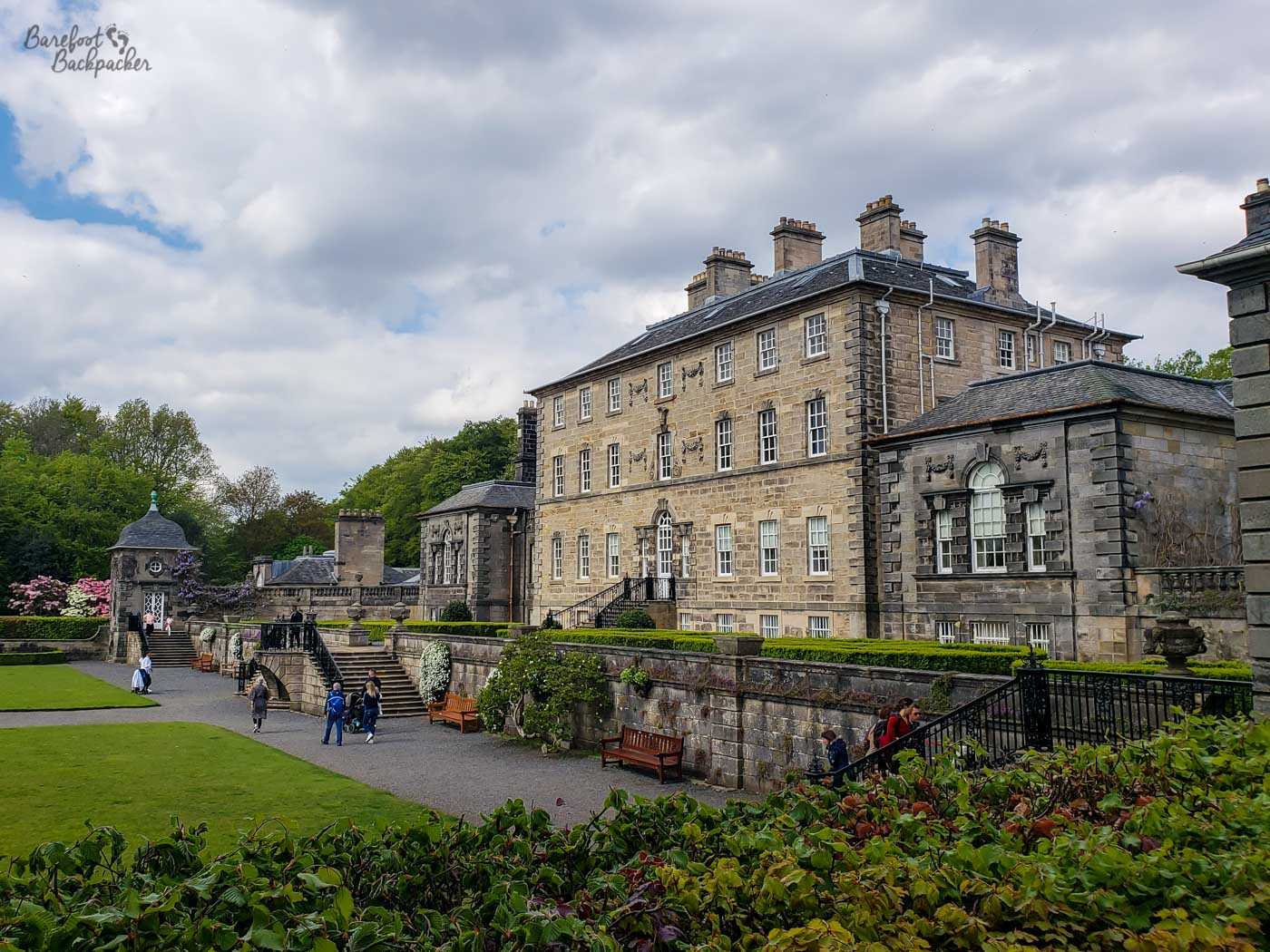
One side of Pollok House. I’ve never been quite sure if it was the front or the back.
Some of it was obtained without as large a trail of receipts as you might hope, and two items in particular have led to restorative payments in the tens of thousands of pounds being made to German Jews who originally owned those pieces but which were looted from them by the Nazis.
Is Pollok Country Park free to visit?
Yes. Though I don’t know about parking, obviously.